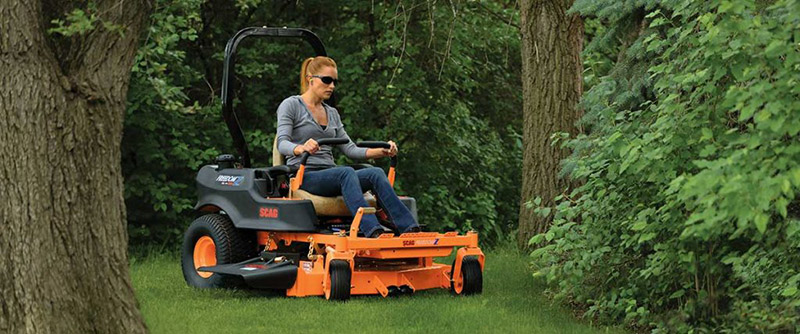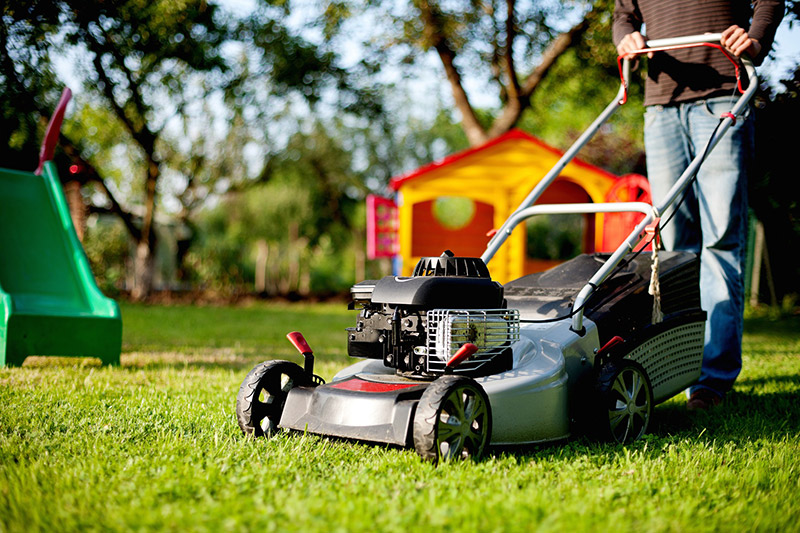Zero-turn mowers play a crucial role in keeping your lawn clean and neat. However, for a zero turn mower to work efficiently it needs proper maintenance and care. Just like other gardening equipment, zero-turn mowers get covered in dirt and grime, so they need to clean your zero-turn mower regularly.
Mowers that are not cleaned regularly are less efficient so you’ll be spending more time mowing when you could be doing something else. This not only wastes your time but is a waste of fuel. Not cleaning the mower regularly will wear down crucial components of the mower quicker so if you want your zero-turn mower to last longer make sure you clean it.
Table of Contents
How Often Should You Clean Your Mower?

It depends on many factors such as the type of zero turn mower you have, and the grass being mowed. If the grass is long and wet, then it will stick more to the deck so you should wash the mower more often.
Mulching zero turn mowers tend to accumulate more dirt than regular mowers so you should wash these down more often. Most manufacturers have put guidelines on how to clean the mower and how often you need to clean it.
It is advised that you read and follow those recommendations when cleaning your zero turn mower, however, most zero-turn mowers are cleaned two to three times throughout the mowing season.
Tips On Cleaning The Zero Turn Mower Safely

Cleaning your zero turn mower regularly will keep it running smoothly but remember when dealing with any large piece of equipment to always take safety precautions. If you aren’t careful you could damage crucial parts of the mower that will cost, you money to repair or replace.
Money aside, make sure you and your family members are safe when cleaning the mower as high-pressure washers can be dangerous if not used correctly. Always make sure your mower is turned off too when washing it down. The next section has tips on how to clean your zero turn mower safely.
1. Cleaning the deck
The zero-turn mower deck is the enclosed housing where the blades spin. If dry grass clippings stick here, it can deflect the blade which reduces its cutting efficiency. Experts recommend that the deck should be cleaned at least twice during each mowing season.
Cleaning the deck is quite simple: empty the gas tank, disconnect the spark plug wire and turn the mower on its side. Use a pressure washer to remove all built-up grass, grime, and dirt. Make sure the mower, pulleys, and belts are cold prior to cleaning.
2. Cleaning the engine
Before you start cleaning the engine, disconnect the spark plug to prevent starting the unit accidentally. Detach the blower housing then gently remove the engine screen.
Don’t use pressurized air when cleaning the engine as it may force some debris inside the engine which damages the engine. Before you start cleaning the engine make sure it has cooled down. Instead of cleaning corroded plugs, replace them.
Make sure to wash the radiator, cooling fins, flywheel fins and inside of the blower. Also, clean battery terminals, throttle linkages and choke.
3. Cleaning the spark plug
Spark plugs also get dirty with time and need regular cleaning. Remove the spark plug from the mower before you start cleaning it. Spray it with a brake cleaner then let it settle for a few minutes. Scrub the spark plugs threads with a wire brush to remove grime that has stuck.
4. Cleaning the blades
Keeping the blades of the mower clean and sharp is crucial for the optimum functioning of the mower. To clean the blades, you need to rinse the blade with a pressure washer.
5. Cleaning the air filter
Air filters need to be cleaned after every 25 hours of the mower being used. Remove the cover on the filter then clean around the filter. Use a suitable detergent to wash inside the filter then dry it gently with a dry cloth.
Remember that the air filter is a vital part of the mower. If it is not in good condition, then the mower engine could be severely damaged. Please refer to the manufacturer’s recommendations and guidelines as the climatic conditions will determine the frequency of cleaning.
How to Keep the Mower and Pressure Washer Maintained

Zero-turn mowers and pressure washers can last for a long time if they are well maintained. Below are tips on how to keep the mower and pressure washer well maintained.
The zero turn mower
- Store the zero turn mower somewhere undercover. The mower should be stored in an insulated shed or garage to protect it from changing weather conditions.
- Clean the zero turn mower after every use. Proper cleaning techniques should be followed when cleaning the machine. If you aren’t able to thoroughly clean it each time even a quick clean is better than nothing.
- Check the engine regularly to ensure that it is in top shape. Some things to check include oil level and spark plugs.
- Empty the lawn bag after each use and give it a quick clean.
- Check the blades for sharpness and accuracy
- Replace any worn-out parts with parts recommended by the manufacturer
Pressure washer
- Run water through the system to flush out any leftover detergent
- Clean off any debris
- Check oil and fuel levels regularly
- Check the motor and screen filter for any leaks
- Replace any broken or damaged parts
- Clean the pressure washer after use
Benefits of Cleaning Your Mower with a Pressure Washer

Pressure washers are a popular way to clean a zero-turn mower. Unlike other cleaning methods, pressure washers are great because they can remove mud, grass, and debris from parts of the mower that can be hard to get to, such as the blades, underneath the deck, and other crucial parts of the machine.
The zero-turn mower will be sparkling clean after a thorough wash and ready to be used again. A pressure washer makes cleaning zero-turn mowers effortless.
Cleaning your zero-turn mower can be made easier by using a pressure washer. Washing your mower regularly will keep it in top condition and by following the above steps you can clean your mower safely and efficiently.
Author Bio:
Rob Shearer is the National Sales & Marketing Manager for SCAG Australia, who travels around Australia visiting dealers and attending field days to understand trends in each region of the country. He also conducts demonstrations for fleet buyers and government departments.

